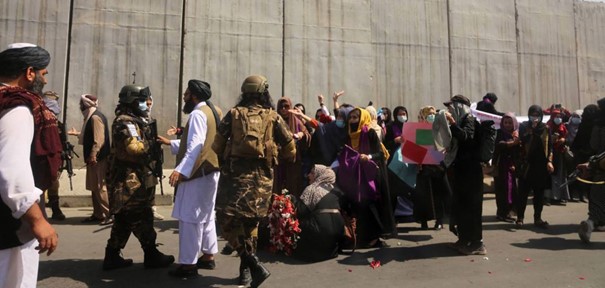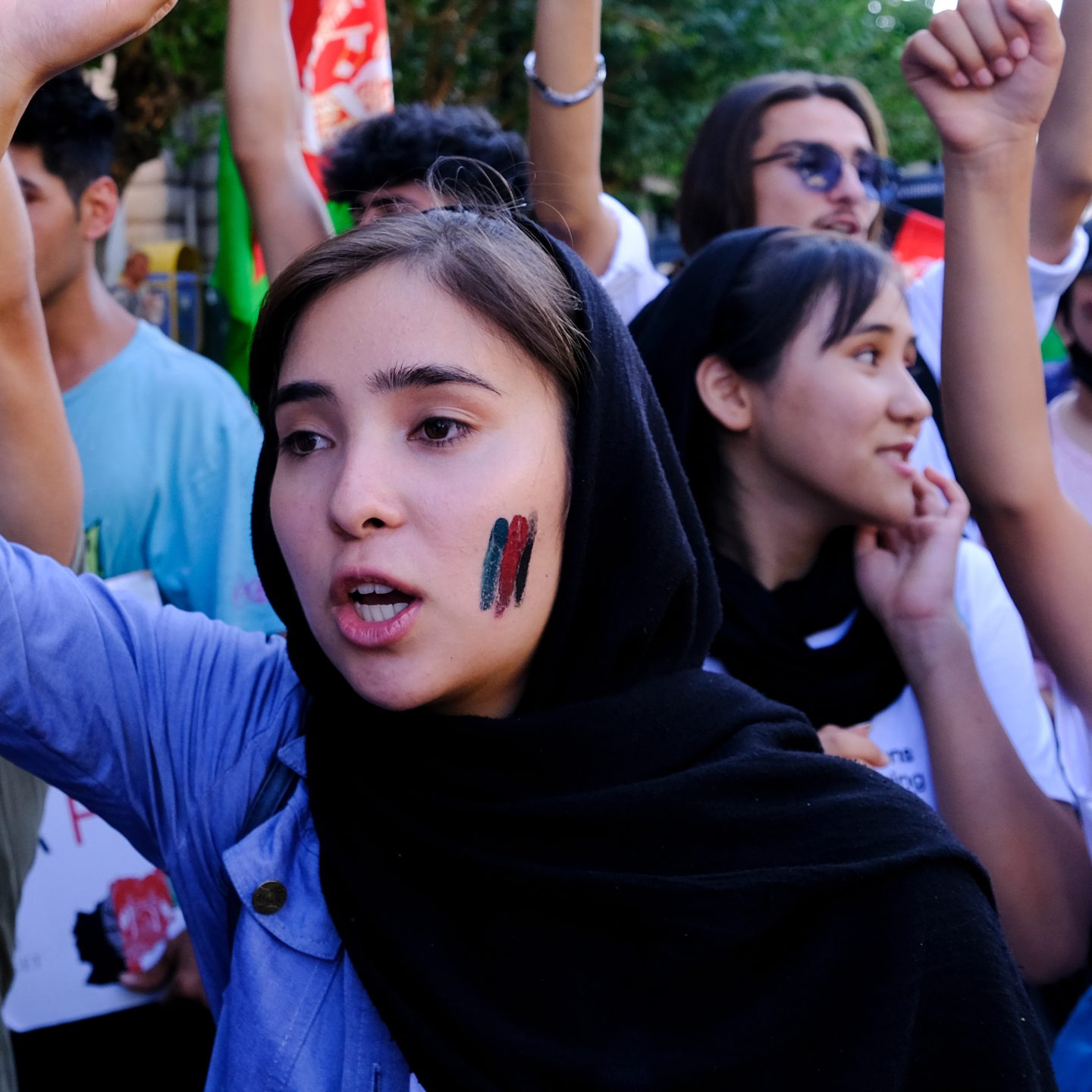Header Image Credits: Alexandros Michailidis / Shutterstock
#Listen to this post
On August 15, 2021, the Taliban take over Kabul in the midst of a tumultuous withdrawal of foreign troops led by the United States, bringing an end to a two-decade-long conflict and triggering the downfall of President Ashraf Ghani’s Western-supported government. The Taliban are promising the Afghans more freedom compared to their previous rule from 1996 to 2001, including for women. However, the stark reality turns out to be a far cry from these promises:[1] Within just a month after taking over Kabul, the Taliban declare that women can only attend gender-segregated universities with separate entrances and classrooms. Several months later, girls are barred from middle and high schools. In May 2022, Taliban supreme leader Hibatullah Akhunzada orders women to fully cover themselves in public, to not travel without a male escort, and to generally stay at home. In November, women are banned from visiting parks, gyms and other public places and eventually, in December, the ministry of Education declares that women are no longer allowed in universities.[2]
Despite not being allowed to, women have been speaking out against the regime and its restrictions from day one. In the past two years they organized street protests, started underground and online schools, and set up networks to support each other. Many new organizations were also formed, such as the Purple Saturday Movement[3], besides the ones that already existed since the previous regime, such as the Afghan Women’s Network.[4] Recently however, women and these organizations were faced with increasing violence from the Taliban. In response, many decided to take their protests indoors.

Taliban guards intervene a demonstration in Kabul[5]
Instead of going out on the streets, women have started using digital spaces to amplify their demands and reach the international community. Organizing through WhatsApp and Telegram, they post pictures and videos of the protests on Facebook, Instagram and X, formerly known as Twitter, drawing attention to the worsening crisis.[6] Heather Barr, women’s rights associate director at Human Rights Watch[7], said the following about this recent development:
“The indoor protests feel like a valuable way of saying, in between the very risky street protests: ‘We’re still here. Just because you don’t see us on the streets every day it does not mean that our resistance is over’.”
As such, the internet has become a haven for Afghan women to express their concerns, connect with like-minded activists, and shed light on the challenges they face daily. Social media platforms, blogs, and online forums provide spaces for them to share stories, images, and videos, spreading awareness about their plight and the urgent need for international support.[8] The power of online activism is also exemplified by the Afghan Women’s Network (AWN), a collective of women dedicated to advocating for their rights. AWN’s members are making their voices heard on social media platforms, shedding light on their daily lives, and amplifying their calls for justice. Their use of hashtags like #SupportAfghanWomen and #NoToViolenceAgainstWomen has gained traction worldwide, helping to raise awareness about the dire situation in Afghanistan.
In addition, the digital realm has not only served as a platform for raising awareness but also as a means of documenting human rights abuses. Women are courageously sharing firsthand accounts and photos of their experiences, ensuring that the world remains informed about the extent of the Taliban’s repression. At the same time, international human rights organizations and governments are using these firsthand stories and images to monitor the situation in Afghanistan and advocate for Afghan women. Many images and videos were already used by organizations for online campaigns and petitions calling for humanitarian aid and support for the most vulnerable.
Finally, online protesting also appears to have advantages over offline protesting. For example, women activists are using encrypted messaging apps and secure communication channels to coordinate efforts and protect their identities from the Taliban’s prying eyes. Besides, it has become much more accessible for many women to join the protests, as it’s much easier to stay anonymous when you’re protesting online. Nevertheless, protesting against the Taliban, whether offline or online, comes with risks. The Taliban have shown a keen interest in tracking down and punishing those who dare to question their authority on the Internet. Afghan women activists thus continue to navigate a precarious landscape where revealing their true identities can lead to dire consequences.
If you want to stay informed about the situation in Afghanistan, make sure to follow pages such as @afghanwomen_j_m and @AWNKabul, and share their stories. It is our responsibility to stand in solidarity, ensuring the voices of Afghan women continue to be heard, their rights upheld, and their hopes for a better future sustained.
Don’t want to read? Listen to this post here:
[1] https://theglobalobservatory.org/2023/10/you-cant-ignore-the-voices-of-afghan-women-interview-with-heather-barr/
[2] https://www.aljazeera.com/news/2022/12/21/timeline-taliban-crackdown-on-afghan-womens-education-rights
[3] https://www.purplesaturdays.org/
[5] https://edition.cnn.com/2021/09/04/asia/afghanistan-saturday-intl/index.html
[6] https://www.context.news/digital-rights/afghan-women-take-protests-online-as-taliban-crush-dissent
[7] https://theglobalobservatory.org/2023/10/you-cant-ignore-the-voices-of-afghan-women-interview-with-heather-barr/
[8] https://www.japantimes.co.jp/news/2023/08/14/world/afghan-women-protest-online/

